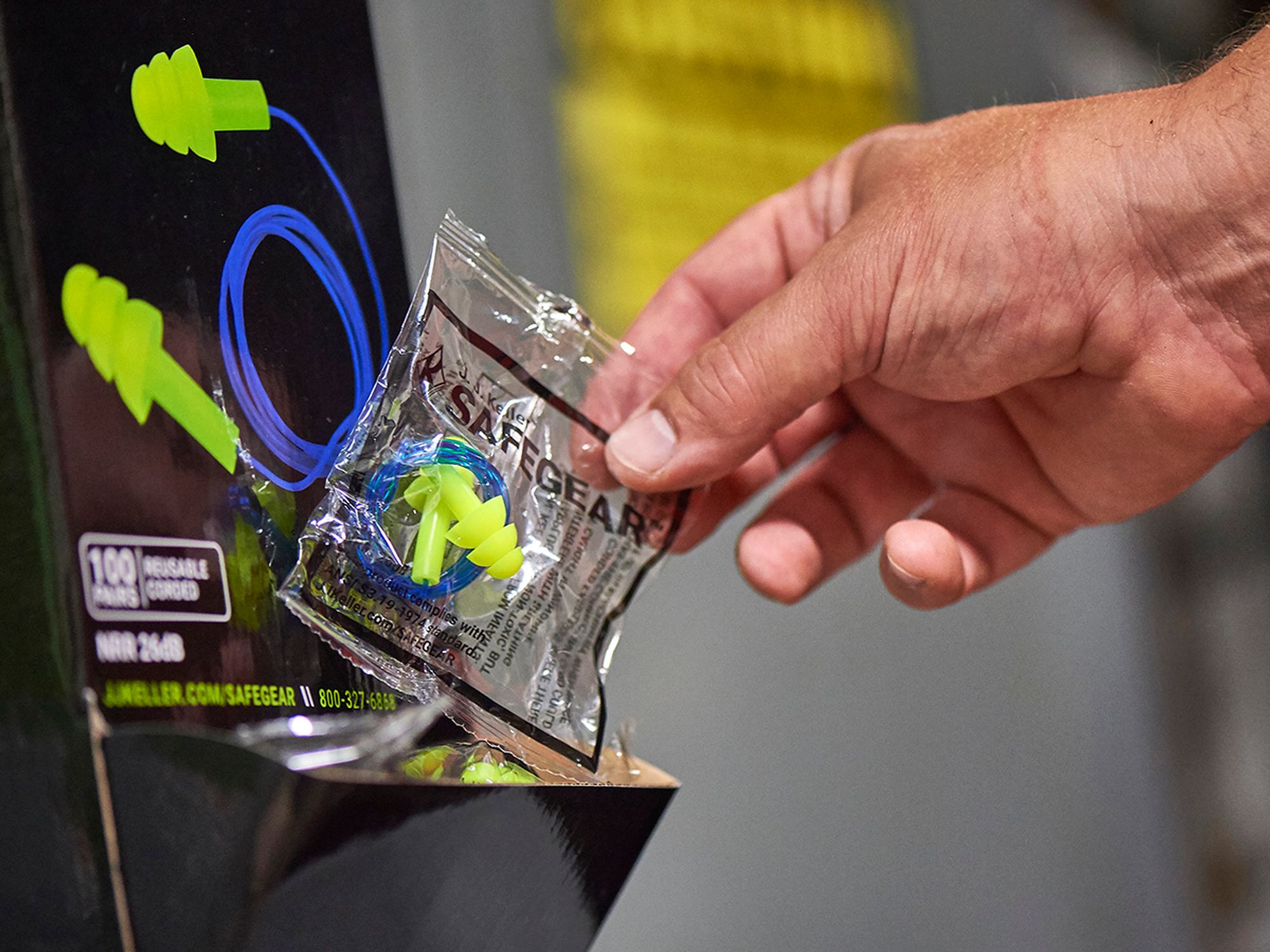Select the right hearing protection

- Hearing protectors must fit properly, be comfortable, and be easy to wear; otherwise, employees will not wear them correctly or as often as needed.
The best hearing protector is the one that is comfortable and convenient and that will be worn every time a person is in an environment with hazardous noise. Hearing protectors should be selected based not just their attenuation capability but also on comfort, convenience, and compatibility. Employees won’t wear hearing protectors that are uncomfortable or difficult to use or that interfere with their work. To ensure they will wear the protectors, employers should allow employees to choose, with the help of a person trained in fitting hearing protectors, from among a variety of appropriate types and sizes.
Most hearing protectors are labeled with a noise reduction rating (NRR) indicating a protection level in decibels. However, these ratings are not reliable outside of a testing laboratory, which is where they received the rating. The NRR rating tends to overestimate the protection a hearing protector will provide under real-world conditions.
One way to estimate the real-world effectiveness of a hearing protector is to subtract seven decibels from the manufacturer’s NRR as shown below:
| Noise level to which the worker is exposed, averaged over an eight-hour period | 95 decibels |
| NRR shown on the hearing protector label | 25 decibels |
| Subtract 7 decibels from the NRR | 25 - 7 = 18 |
| Subtract 18 dB from 95 decibels | 95 decibels - 18 dB = 77 decibels |
This hearing protector may be able to reduce the worker’s exposure down to 77 decibels in this 95 decibel environment.
